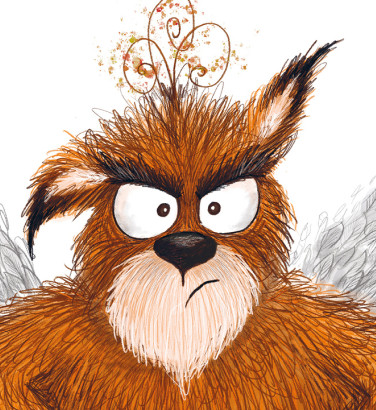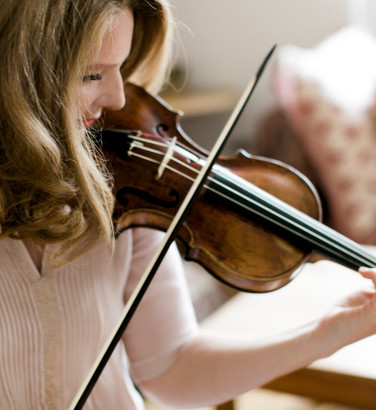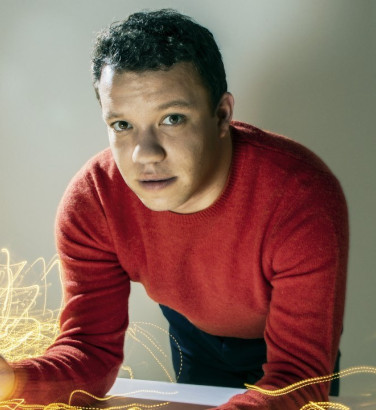
Sam Amidon: "music is listening, connecting with each other"
13 Feb 2023
News Story
As is the case with his friend and colleague Pekka Kuusisto, any attempt to define Sam Amidon's musicianship feels constricting. His musical roots may lie in folk music, but his performances extend far beyond the folk circuit. This March, he joins Pekka and the SCO for a pair of concerts in which folk songs from different traditions act as a fascinating commentary on classical repertoire.
Performing with soloists from outside the classical tradition being something of a rarity for the Orchestra, we are delighted that Sam agreed to a short interview by way of introduction.
How did you first meet Pekka Kuusisto?
I first met Pekka through Nico Muhly, who had us all performing in a concert together at the Barbican [in London], maybe around 2010. When I got back home from the concert, I noticed that my cell phone had some new voice memos recorded on it. I listened to them and they were traditional Finnish fiddle tunes Pekka had secretly recorded for me to learn when I was out of my dressing room! Each voice memo started with Pekka saying "Hi Sam. This is Pekka. Here is a polska from the ___ region of ___." Our friendship and musical partnership began there.
Your background takes in an impressive range of musical disciplines. How does performing with a classically-trained ensemble compare with your other collaborations?
It is a powerful feeling to sing with all those beautiful strings around your head. It's always a good challenge for me because things like tone and intonation have to be that much more precise and integrated with the ensemble. At the same time, music is music - it's the same idea, listening, connecting with each other, and sending that out to the audience.
How do you feel the addition of Appalachian folk songs to the Kreutzer Sonata enhances Janáček’s work?
One of my favourite elements of Appalachian traditional folk songs (which is true of many other folk song, ballad and folk tale traditions) is the fact that they do not shy away from the darker edges of existence. And that is very much true of the Kreutzer Sonata, connected as it is to Tolstoy's story of jealousy and murder. So for this programme we have chosen a selection of traditional folksongs that connect in different ways, and bring out some different stories.
Moving on to Transcendental Visions (your second concert with Pekka and the SCO), could you tell us about your experience of the shape-note tradition and the hymns that arose from it?
Shape-note singing is a 200-year-old hymn singing tradition that started in the late 1700s in New England, moved south to Alabama and Georgia in the 19th century, and is now practiced throughout the US and in other parts of the world as well. It's a participatory singing tradition - the singers sit in a large square, with an empty centre, singing loud and strong, and the singers take turns standing in the centre and leading a song. (In other words, there is no place for an audience - the music is intended to be sung, not just listened to!)
The songs are religious, but the tradition has always been done in a social setting, outside of church. And in the modern era, there are people of all different religions and philosophies who are committed regular shape note singers.
My parents fell in love with this music when they first met, and sang on a classic recording of shape note songs called Rivers Of Delight, as part of the World of Mouth Chorus, released on Nonesuch Records in 1978. I grew up with regular singings in my house and around the neighbourhood. These songs and melodies are some of the deepest-embedded in my mind.
I love the harmonies and poetry of the shape note songs, and I have given a few of them a different musical setting, more gentle than the standard style.
Is there any other repertoire you’d love to explore with the SCO?
Great question! There are so many possibilities ... I grew up in Vermont, US, primarily playing traditional fiddle tunes until my late teens. The New England fiddle style is a mix of Celtic, French Canadian and Appalachian influences. So it could be interesting to put something together focused more around fiddle tunes ... Who knows!

Folk Inspirations with Pekka and Sam
Combine Janáček's Kreutzer Sonata with songs from rural Appalachia, and the tortured emotions take on an incredible new dimension. On the lighter side, Pekka sheds light on the folk roots of his fellow Finn Sibelius' Symphony No 3.

Transcendental Visions with Pekka and Sam
We enter a more spiritual dimension for this Sunday afternoon chamber concert. John Adams' vision of the Shaker tradition meets early American hymns from the shape-note tradition - as you can expect from Pekka and Sam, with revelatory results.
Related Stories
![]()
The Great Grumpy Gaboon: a chat with Jay Capperauld and Corrina Campbell
30 December 2024
What is a Gaboon, and why is it grumpy? We chatted to the creators of our new Family Festival to find out ...![]()
Rachel Podger: "I'm especially fond of the Polonaise in the First Brandenburg Concerto"
9 December 2024
The feted British violinist talks to us about her love for the Brandenburg Concertos and more.![]()
Ryan Bancroft: "a conversation with the leader of a Finnish orchestra changed how I heard Sibelius"
30 September 2024
We speak to conductor Ryan Bancroft about music from (his not quite native) Scotland and Scandinavia.


